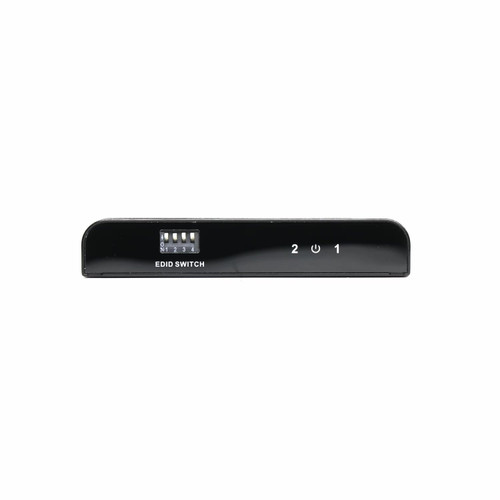The HDTV Supply WolfPack EDID Selector emulator/learner, it can study the display model and save it. It solves the no image, wrong resolution and so on issues which caused by the wrong EDID. The EDID Selector is designed to overcome EDID related problems which can occur when used with AV extenders, switches, and splitters.
By learning the EDID from the HDMI display and relaying it to the video source, the EDID Selector can resolve video problems that occur when EDID data between the HDMI video source and display are not correctly synchronized. Moreover, after the displays EDID is learned, the EDID Selector can be used in place of a monitor to keep a PC or Server awake for remote access via IP.
WolfPack EDID Selector Features:
- Contain 15 preset EDID data for commonly used resolutions and refresh rates
- Learn EDID data from the indicated HDMI display
- Bi-direction simulation, it can be connected in the source or display side
- Supports HDMI 1.4, HDMI 1.4 and below versions, HDCP compliant
- Resolutions up to 1080p@60Hz
- Supports 3D, Deep Color & CEC
- Supports Dolby True HD & DTS HD Master Audio
- Two color LED indicator to show EDID status
- Powered by HDMI source
Why not buy this WolfPack EDID Selector today?
WolfPack EDID Selector Specification:
- Input: HDMI port(male)
- Output: HDMI port(female)
- LED indicator: Screen / Blue light
- Power Supply: By HDMI
- Dimension (WxHxD): 41x23x12mm
- Weight: 20kg
- Operating Temperature: -10˚C to 50˚C
- Storage Temperature: -25˚C to 55˚C
Why not buy this WolfPack EDID Selector today?
Why not buy this WolfPack EDID Selector today?
A: This product features CEC (Consumer Electronics Control) allowing your HDTV's remote to manage up to ten devices that are connected via HDMI (such as Blu-ray Disc players or home theater receivers) with no special programming needed.
Most major TV manufacturers now support CEC, and an HDTV with HDMI 1.3 will likely have the technology. Manufacturers call it by different names; LG Electronics, for instance, calls its implementation SimpleLink, whereas Toshiba calls its version CE-Link. Interoperability isn't mandatory, so some manufacturers limit control to their own products; Sony, for one, allows only Sony-to-Sony communication.













